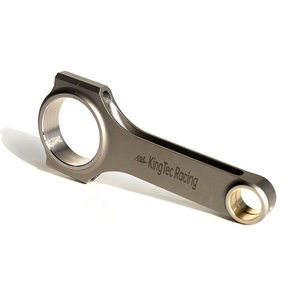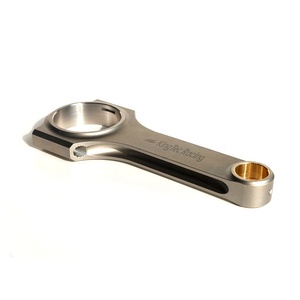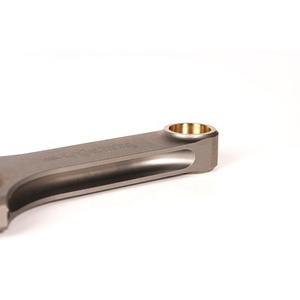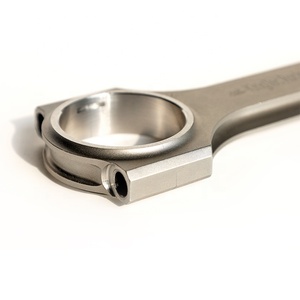(2 products available)












The KLZE engine is a type of engine code used by Mazda for their K series V6 engines. The KLZE is a popular choice for engine swaps and performance upgrades. It is known for its smooth power delivery and high-revving nature, making it suitable for a wide range of applications.
KLZE Engines
The KLZE engine is a type of KL series engine. This Mazda Kappa engine is a V6 60-degree engine. The KLZE engine is a popular choice for engine swaps and performance upgrades. It is known for its smooth power delivery and high-revving nature, making it suitable for a wide range of applications. The KLZE engine is based on the KL series V6 engines, which were first introduced in the early 1990s. The KL series engines use a DOHC 24-valve configuration with aluminum alloy cylinder blocks and cylinder heads. The KLZE engine is a variant of the KL series engines, and it features several upgrades and improvements over the base engine. Some of the key features of the KLZE engine include a high-performance intake manifold, larger diameter exhaust headers, and upgraded camshafts. These changes help to increase airflow and improve overall engine efficiency.
KLZE tuning
KLZE tuning refers to the process of modifying and optimizing the Mazda KLZE engine to enhance performance, fuel efficiency, and overall driving characteristics. Tuning the KLZE engine can unlock its full potential and provide a more engaging and powerful driving experience.
One of the most common modifications on the KLZE engine is the intake system. Upgrading to a high-flow air filter or a cold air intake can improve airflow into the engine, resulting in increased horsepower and torque. Exhaust system upgrades, such as larger diameter exhaust pipes and high-flow catalytic converters, can further enhance engine performance by reducing exhaust backpressure.
Ignition system upgrades, such as high-performance spark plugs and ignition coils, can improve combustion efficiency and contribute to a more responsive engine. Additionally, tuning the engine control unit (ECU) can optimize fuel delivery, ignition timing, and other parameters to maximize performance gains.
Another important aspect of KLZE tuning is ensuring proper engine cooling. Upgrading the cooling system with a high-performance radiator, intercooler (for turbocharged applications), and efficient cooling fans can help maintain optimal operating temperatures, especially during demanding driving conditions.
Suspension and chassis upgrades play a significant role in enhancing overall performance and handling. Lowering springs, performance shock absorbers, sway bars, and upgraded bushings can improve stability, cornering grip, and overall agility, complementing the increased power from the tuned KLZE engine.
It's essential to approach KLZE tuning with careful consideration and expertise. Consulting with experienced automotive professionals or tuning specialists can ensure that modifications are done correctly, and the engine's reliability and drivability are maintained.
Regular oil changes
Regular oil changes help keep the engine well-lubricated and protect its moving parts from wear. Follow the recommended oil change intervals in the owner's manual. Use quality oil and a new filter for optimal results.
Air filter replacement
The air filter should be checked regularly and replaced as needed. A clean air filter ensures proper airflow into the engine for efficient combustion. A clogged filter restricts airflow, which can lead to poor fuel economy and reduced power output.
Coolant flushes
Coolant flushes are important for maintaining the engine's temperature control system. Over time, coolant additives break down and deposits can form. A flush removes these deposits, ensuring the cooling system works effectively. This helps prevent the engine from overheating.
Spark plug checks
Spark plugs should be inspected periodically for signs of wear or carbon buildup. Replacing worn spark plugs improves ignition reliability and fuel efficiency. The spacing between electrodes also needs to be checked and adjusted as per specifications in the owner's manual.
Tire rotation
Tires should be rotated according to the schedule in the owner's manual or every 5,000 to 8,000 miles. Tire rotation promotes even tread wear, maximizing tire life. It also ensures optimal traction and handling, which is important for vehicle safety and performance.
Timing belt replacement
The timing belt should be changed at the mileage specified by the manufacturer or sooner if there are signs of wear. A worn timing belt can lead to costly engine damage if it snaps or skips a tooth. Preventive replacement minimizes this risk and gives peace of mind.
Regular inspections
Inspections of engine components such as belts, hoses, and filters should be done routinely. Problems like cracks or leaks are easier to fix when detected early through visual checks. Preventive inspections help avoid breakdowns and costly repairs down the line.
Before purchasing a KLZE engine, it is important to consider these factors to ensure the needs of the end customers are met.
Condition
The condition of the KLZE engine is an important factor to consider. Customers looking for engines that will last a long time without any issues might want to purchase a brand-new engine. On the other hand, customers who are okay with doing minor repairs or want to save money on the initial purchase might want to get a used or refurbished KLZE engine.
Budget
The budget plays a significant role when choosing a KLZE engine. The cost of the engine itself and additional expenses such as installation, maintenance, and required modifications should be considered. Finding a good balance between the desired performance level and the available budget is crucial.
Installation requirements
Not all vehicles require the same installation process for the KLZE engine. The complexity of installing the KLZE engine in a vehicle and whether any modifications are needed should be considered. Some cars may require extra work to fit the engine properly, while others may have a more straightforward installation process.
Performance needs
Consider the performance requirements based on the type of driving that will be done. For those who want a lot of power, the KLZE engine that provides the highest output should be chosen. If driving is mostly on regular roads, then an engine with a lower performance level will be sufficient.
Fuel efficiency
When it comes to fuel efficiency, the KL-ZE engine consumes more fuel compared to other smaller engines. However, it is more fuel-efficient than other larger engines like the 13B rotary engine. If fuel efficiency is a top priority, the KLZE engine can be used in combination with other strategies, such as maintaining a steady speed and ensuring proper vehicle maintenance, to optimize fuel usage.
Future-proofing
Consider how long the engine will be relevant in terms of technological advancements and regulatory changes. If an engine is chosen that is already outdated in terms of emissions standards, it may need to be replaced sooner to comply with future regulations.
Before attempting to install a KLZE engine, it is important to have a good understanding of car mechanics. Follow the steps below to install a KLZE engine:
Tools needed:
Prepare the necessary tools for the job: socket set, wrenches, screwdrivers, pliers, engine hoist or jack, jack stands, torque wrench, and possibly a kldf or custom engine mount adapters.
Safety precautions:
Ensure the vehicle is on a level surface, engage the parking brake, and use wheel chocks. After disconnecting the battery, it is important to wait for about 5 minutes before working on the vehicle's electrical system. After draining the engine oil and coolant, it is important to wear safety gloves to avoid contact with the fluids. Ensure proper ventilation when working with fuel or oil.
Prepare the vehicle:
Park the vehicle in a well-ventilated area, and ensure it has enough space. Disconnect the battery and electrical components. Drain the engine oil and coolant. Remove the front bumper, hood, and other panels that may obstruct access to the engine. Remove the air intake system, exhaust manifold, and other engine components.
Engine removal:
Use a hoist or jack to lift and support the engine. Disconnect the engine from the transmission using a hoist or jack. Disconnect all electrical, fuel, and cooling system lines. Remove the engine from the vehicle by lowering it onto a stable surface.
Engine preparation:
Transfer all necessary engine components from the old engine to the new KLZE engine. Install the KLZE engine into the vehicle by raising it and aligning it with the engine mounts. Connect the engine to the transmission, ensuring all bolts are torqued to the manufacturer's specifications.
After installation:
Reconnect all electrical, fuel, and cooling system lines. Reinstall the air intake system and exhaust manifold. Reinstall the front bumper, hood, and other components. Refill the engine oil and coolant. Start the engine and check for any leaks or abnormal sounds. Perform a test drive to ensure everything operates smoothly.
Q1: How can one improve the performance of the KLZE engine?
A1: Users can improve the performance of the KLZE engine by ensuring it is well-maintained. They can also use high-quality lubricants, upgrade to a performance exhaust system, and consider engine tuning.
Q2: What fuel should be used for the KLZE engine?
A2: The KLZE engine, like most petrol engines, performs best on unleaded petrol with an octane rating of 91 or higher. In regions where 91 is not available, users should opt for the closest available alternative.
Q3: What are the common sounds associated with a failing KLZE engine?
A3: If the KLZE engine sounds like knocking, it could be a sign of a serious problem like pre-ignition or detonation. A grinding or squealing noise could be indicative of a failing bearing or valve. Users should seek professional help when they hear these sounds.
Q4: How does the KLZE compare with other engines in terms of emissions?
A4: The KLZE engine has competitive emissions figures compared to most of its contemporaries. However, it does not meet the stringent Euro 6 standards, as it was developed before those regulations were established.
Q5: Is the KLZE engine a good choice for performance upgrades?
A5: Yes, the KLZE engine is a popular choice among performance enthusiasts. Its solid internals and potential for turbocharging make it suitable for significant performance gains.